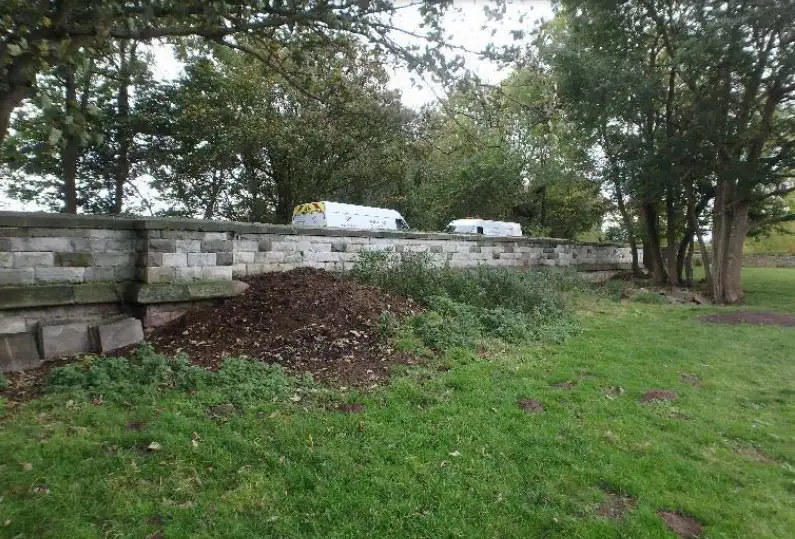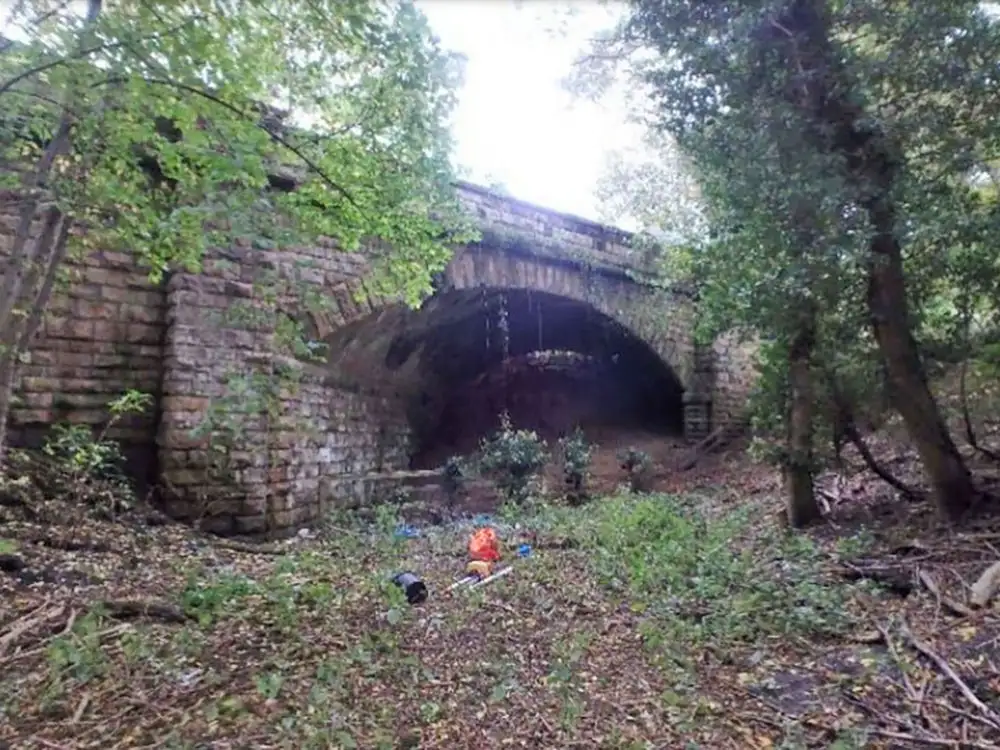Pressure is mounting to reverse the burial of a North Yorkshire Victorian railway bridge built by the first pupil of Robert Stephenson.
About 150 objections to a retrospective planning application for the £133,000 of works National Highways carried out at Rudgate Bridge, north-west of Tadcaster, have been lodged with the local authority in recent weeks, expressing outrage and accusing the company of “cultural vandalism”.
Many of the objectors have underlined the heritage importance of the Church Fenton to Harrogate line, which passed beneath the bridge and was one of the first casualties of the Beeching Axe.
It was constructed in the 1840s by the York and North Midland Railway under the chairmanship of George Hudson, known as The Railway King.
The bridge features a skewed arch and was built by John Cass Birkinshaw, thought to be the first articled pupil of Robert Stephenson, with whom he worked on several of Yorkshire’s railways.
Planning documents submitted by National Highways state it undertook works in 2021 “to prevent a risk of harm to the public” due to deterioration of the structure and to ensure the bridge and the unclassified road running over it could continue to be used safely.
The papers state it wrote to Selby District Council three times in 2020 and 2022 about the proposed strengthening work to seek guidance on planning requirements and was told the authority “had no objections or comments to make”.
The application states, following a complaint from a member of the public, the council requested information about the bridge and that National Highways submit a retrospective planning application.
However, objectors have accused National Highways of inappropriately using emergency powers to rid itself of a “liability”, saying a previous inspection in 2018 found the structure to be in a “fair” condition and suitable for a capacity of 32 tonnes.
‘Unjustified and unsympathetic’

In a written objection, the HRE Group, an alliance of engineers, heritage campaigners and greenway developers, said the Rudgate scheme was one of six infills carried out by National Highways nationwide under emergency powers that needed consent to be made permanent.
A spokesman for the alliance wrote: “In all cases, the company failed to seek consent for retention, resulting in the works becoming unauthorised…”
Objectors have highlighted how other councils have refused to grant National Highways with retrospective planning consent for the infills and have issued enforcement notices.
The spokesman added: “Rudgate bridge was infilled for liability reduction purposes; no meaningful engineering or safety concerns have been demonstrated.”
A spokesman for Save Britain’s Heritage said National Highways oversaw an “unjustified and unsympathetic approach to managing and maintaining historic structures”.
Another objector accused National Highways of “underhand tactics” and wasting thousands of pounds of money from the public purse.
He wrote: “This is cultural vandalism by a public body who are only interested in asset management and not the heritage value or potential active travel reuse of the structure.”
National Highways said: “In 2018, Rudgate Road Bridge failed a capacity assessment (a capacity assessment gives a recommendation of how much weight a bridge can carry).
“The failure highlighted that vehicles or objects over a certain weight using the bridge could cause the bridge to collapse. Safety is our main priority, so we worked with our contractor to develop a plan that would maintain safety of the public and the road.”
You can read more about this here.
North Yorkshire Council’s planning committee will decide on the application.
